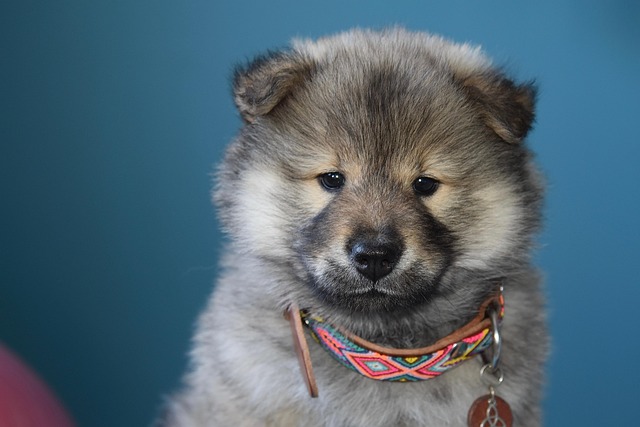
What causes floppy ears in dogs?
You might’ve noticed how some puppies start with perky ears that slowly flop as they grow—this shift isn’t just a cute quirk, but often tied to their genetics.
I sat with my friend Tyler on his Dallas apartment floor last week, watching his 4-year-old Great Dane, Zeus, slump beside his food bowl—once energetic, now napping 18 hours a day, and his gums looked paler than usual. “I switched to grain-free food because I thought it was healthier, but he’s been off for two weeks. Does grain free dog food cause problems, or am I overreacting?” Tyler asked, holding up a bag emblazoned with “grain-free” in bold letters. If you’re a new U.S. dog owner wondering the same, the answer is: It can—especially if you pick the wrong kind, or your pup doesn’t need it. The hype often hides real risks.
To understand why grain-free dog food can cause problems, let’s start with how dogs digest food. Dogs are omnivores, not strict carnivores—their bodies evolved to break down grains like brown rice and oats, which provide cheap, nutrient-dense fiber and B vitamins. Tyler’s vet explained that “grain-free” doesn’t equal “healthy”; many brands replace grains with starchy fillers like peas, lentils, or potato flour to keep costs down. Worse, the FDA issued a 2018 warning linking these legume-based grain-free foods to dilated cardiomyopathy (DCM)—a deadly heart condition where the heart can’t pump blood properly. Great Danes like Zeus are extra at risk because large breeds need more taurine (a heart nutrient), and those starchy fillers block taurine absorption. Most dogs don’t even have grain allergies—only 10% of food allergies in pups are grain-related; the rest stem from proteins like chicken or beef. So Tyler had spent $90 on a bag that was riskier, not better.

Here’s how to figure out if grain-free dog food is causing problems for your pup, using Tyler’s experience with Zeus: First, check the ingredient list (not the label). If “pea protein,” “lentil meal,” or “potato starch” are in the top 3 ingredients (instead of real meat like “deboned beef”), that’s a red flag. Zeus’s food had “pea protein” first—meaning he was eating more plant filler than animal protein. Second, watch for subtle warning signs. Lethargy, pale gums, loose stools, or reduced appetite are early clues. Zeus’s napping and pale gums made Tyler call the vet, who ran a blood panel and found low taurine levels (a DCM precursor). Third, consult your vet before switching back. Tyler’s vet recommended a grain-inclusive food with whole barley and real lamb—within 5 days, Zeus’s energy returned, and his stools firmed up. Fourth, don’t fall for “human trend” marketing. Grain-free diets blew up because people avoid carbs, but dogs don’t share that need. Tyler admitted he bought it because “it sounded premium”—a common trap for new owners.
For apartment living, cost is another hidden problem: grain-free food costs 2–3x more than grain-inclusive options, and apartment dogs (who get less exercise) don’t need “luxury” diets unless medically required. Store food in airtight bins to keep roaches out of small kitchens. Use mealtime for positive reinforcement—Tyler now gives Zeus a freeze-dried beef treat after he eats his new food, no scolding for leaving kibble (which violates U.S. animal welfare standards). When walking, always carry poop bags (Dallas fines $200 for leaving messes)—grain-inclusive diets often produce more consistent stools, making cleanup easier. Keep your dog’s rabies vaccine up to date (required nationwide)—vet visits are the perfect time to review food labels; Tyler’s vet circled the problematic fillers on his old grain-free bag.
A week later, Tyler texted me a video: Zeus trotting around the apartment, wagging his tail, and finishing his bowl in one go. Does grain free dog food cause problems? For Zeus, yes—heart risks and empty nutrition. For most pups, it’s unnecessary at best, dangerous at worst. Don’t let marketing overrule your vet’s advice or your dog’s behavior.

You might’ve noticed how some puppies start with perky ears that slowly flop as they grow—this shift isn’t just a cute quirk, but often tied to their genetics.

I sat with my friend Tyler on his Dallas apartment floor last week, watching his 4-year-old Great Dane, Zeus, slump beside his food bowl

Many pet owners notice their dogs curling up on couches, beds, or even the floor instead of the cozy spot set aside just for them. This common sight often sparks the question of whether dogs truly prefer having their own bed.

Dog’s nail length might seem like a small detail, but it impacts their daily comfort and safety. Figuring out the right trim schedule isn’t hard—you just need to match it to their lifestyle.

Dog’s dental health ties directly to their overall well-being, and the frequency of teeth cleaning depends mostly on their age and lifestyle.

I sat with my friend Maya in her Atlanta apartment kitchen last month, as she stared at a half-empty bag of grain-free dog food and her 3-year-old German Shepherd